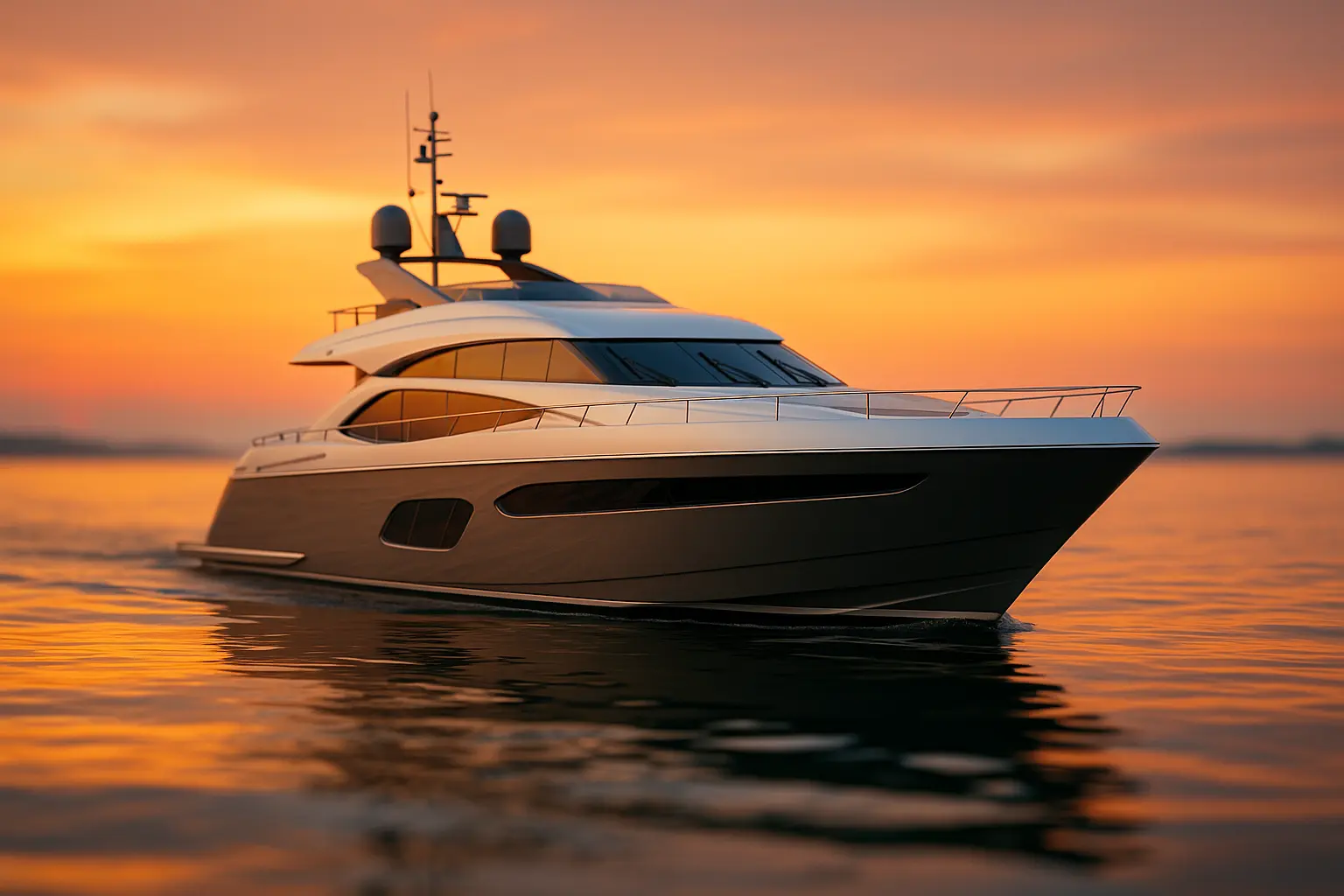Navigating the vast oceans of ship design is both an art and a science, where the allure of striking aesthetics must harmonize seamlessly with unwavering stability. As explorers of the sea, we understand that the hull of a vessel is its true heart, dictating not only its visual appeal but also its performance and safety on water.
In our quest for the perfect balance between form and function, we delve into the intricacies of hull design. We explore how modern engineering and innovative ideas shape boats, yachts, and ships that not only turn heads but also conquer the waves with confidence. Join us as we embark on this enlightening voyage through the world of marine design.
The Art of Hull Design
The hull is the vessel’s canvas, a place where art meets engineering. In today’s world, the design of a hull is more than a technical blueprint—it’s an expression of creativity and innovation. Striking the perfect balance between aesthetics and function is not just an option but a necessity.
Engineering Meets Elegance
Designers and engineers work in tandem, employing cutting-edge technologies and materials to craft hulls that are both visually captivating and structurally sound. From sleek lines that slice through water with ease to vibrant hues that dazzle the eye, modern hull designs are masterpieces in their own right.
Weight and Efficiency
The weight of a hull plays a crucial role in determining the efficiency and speed of a vessel. Lightweight materials, such as carbon fiber, have revolutionized hull construction, allowing for swift and nimble boats that glide effortlessly on water. Yet, achieving this requires meticulous planning to ensure that weight reduction doesn’t compromise stability.
Aesthetics Versus Practicality
While beauty is a defining factor, practicality cannot be overlooked. The shape of a hull influences how a vessel handles various water conditions, from calm lakes to turbulent seas. Modern hull designs are a blend of artistic vision and practical application, striking the perfect equilibrium between performance and allure.
Innovations in Stability and Performance
The seas are unpredictable, demanding vessels that can withstand the challenges of nature while providing a safe and comfortable journey. The stability of a hull is pivotal for ensuring both safety and performance.
Hull Forms and Their Impact
Different hull designs cater to different needs. Displacement hulls are known for their stability and efficiency, ideal for yachts and leisurely cruises. Meanwhile, planing hulls prioritize speed and agility, perfect for those who crave the thrill of cutting through waves.
Advanced Technologies
Technological advancements have elevated hull performance to new heights. Computational fluid dynamics (CFD) simulations allow designers to predict how a hull will perform under different conditions, optimizing its efficiency and safety before it ever touches water.
Balancing Speed and Safety
While speed is exhilarating, it must not come at the cost of safety. The challenge lies in crafting hulls that maintain stability even at high speeds. This delicate dance between velocity and security is where modern engineering truly shines.
Aesthetic Considerations in Hull Design
A vessel’s hull is its signature, a testament to its identity and purpose. The aesthetic choices made in hull design reflect not only the builder’s vision but also the aspirations of those who will sail it.
Visual Identity and Branding
The contours and colors of a hull tell a story—a narrative of adventure, luxury, or innovation. For many, this visual identity is crucial, transforming a mere vessel into a statement piece that turns heads wherever it goes.
Sustainability and Design
In today’s environmentally-conscious world, sustainability is a key factor in hull design. Eco-friendly materials and designs that minimize environmental impact are becoming the norm, allowing boat owners to sail with pride and peace of mind.
Timeless Versus Trendy
The choice between timeless elegance and trendy aesthetics is a matter of personal preference. Some prefer the classic lines of a traditional sailboat, while others gravitate towards futuristic designs that showcase the possibilities of modern engineering. In either case, the goal is to create a vessel that resonates with its owner and stands the test of time.
Navigating the Future of Hull Design
As we set our sights on the future, the world of hull design is poised for exciting developments. The merging of technology, creativity, and sustainability promises a new era of maritime excellence.
Emerging Trends and Challenges
From autonomous vessels to groundbreaking materials, the marine industry is on the brink of a transformation. Designers and engineers must navigate these changes while continuing to prioritize efficiency, stability, and aesthetics.
Collaborative Innovation
The future lies in collaboration, where designers, manufacturers, and environmentalists work together to redefine what is possible on the water. This partnership is key to creating hulls that meet the diverse needs of today’s sailors and tomorrow’s adventurers.
A Vision of Harmony
Ultimately, the future of hull design is about harmony—between technology and nature, art and science, speed and safety. By embracing this holistic approach, we can create vessels that not only conquer the waves but also capture the imagination.
A Symphony on the Sea: Conclusion
Navigating the waters of hull design is a journey of discovery, a testament to human ingenuity and the relentless quest for perfection. As we sail forward, the balance between aesthetics and stability remains our guiding star, illuminating the path to a future where every vessel is a masterpiece of design and engineering.
In this symphony on the sea, we find not only the beauty of the vessel but also the grace of human achievement, forever pushing the boundaries of what’s possible on the open waters.
FAQ
What factors influence the aesthetic appeal of a boat’s hull design?
The aesthetic appeal of a boat’s hull design is influenced by its shape, color, and overall style. The curvature, sleekness, and symmetry of the hull contribute to its visual attractiveness, as do the choice of materials and finishes.
How does a hull’s design impact the stability of a vessel?
A hull’s design significantly affects a vessel’s stability by determining how it interacts with the water. Factors like the hull’s width, draft, and shape can influence buoyancy and balance, ensuring the vessel remains steady even in challenging conditions.
Can a hull design be both visually appealing and highly functional?
Yes, a hull design can be both visually appealing and functional. Designers often strive to harmonize aesthetics with performance, using innovative materials and engineering techniques to create hulls that are both attractive and capable of optimal stability.
What compromises might arise when prioritizing aesthetics in hull design?
When prioritizing aesthetics, certain compromises might be necessary, such as sacrificing some levels of hydrodynamic efficiency or stability. However, skilled designers usually find a balance, ensuring the vessel remains functional while maintaining its visual allure.
How do designers address safety concerns when focusing on hull aesthetics?
Designers address safety concerns by integrating advanced technology and engineering principles into the hull design. This includes using materials that enhance durability, as well as incorporating features like anti-slip surfaces and optimized weight distribution to ensure passenger safety.


